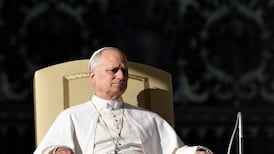Under the Microscope: We are fast approaching the 200th anniversary of the birth of William Rowan Hamilton, Ireland's greatest mathematician, writes Prof William Reville.
A child prodigy, he achieved high academic position at a very young age and made mathematical discoveries of the first order. Unfortunately his personal life was unhappy, mainly because circumstances prevented him from marrying his true love.
He was born in Dublin on August 4th, 1805, to Archibald Hamilton, a solicitor, and Sarah Hutton. William's father was away a lot on legal business, so William lived with his uncle, the Rev James Hamilton, at Trim, in Co Meath, from 1808 to 1823. The priest, a gifted teacher, undertook to educate his nephew.
William showed prodigious learning abilities. By the age of five he had learned Latin, Greek and Hebrew. His interest in mathematics was probably sparked when, at the age of 12, he was introduced to Zerah Colburn, an American boy whose prodigious feats of mental arithmetic were being exhibited in Dublin. William engaged him in tests of arithmetical ability but usually came off second best.
At the age of 15 he began to study the works of Isaac Newton and Pierre-Simon Laplace. Discovering an error in Laplace's work Méchanique Céleste brought him to the attention of John Brinkley, astronomer royal of Ireland, who declared William to be "the first mathematician of his age". Hamilton entered TCD at the age of 18, in 1823, and achieved an "optime" in classics in his first year, an honour awarded only once in 20 years.
In August 1824 his uncle took him to visit the Disney family in Summerhill, in Co Meath, where Hamilton fell in love with Catherine Disney. He longed to marry her but was not in a position to propose, as he had three years of study left at Trinity.
In February of the following year it was announced that Disney was to marry the Rev William Barlow, 15 years her senior but far better positioned than Hamilton to offer material comforts. Disney married Barlow three months later. Hamilton was distraught. He fell ill, contemplated suicide and started writing poetry, a habit that he continued throughout his life in times of despair.
Hamilton's mathematical studies were, at least, going very well. In 1824 he submitted his first paper on mathematics to the Royal Irish Academy. His finals examiner persuaded him to apply for the vacant post of astronomer royal at Dunsink Observatory, in Castleknock, and in 1827 he was appointed professor of astronomy at Trinity even though he was still a 21-year-old undergraduate. Hamilton had little experience in practical astronomy. His interest waned, and he spent almost all of his time doing mathematics.
Hamilton made major contributions to mechanics, optics, geometry and algebra. In 1832 he made the daring mathematical prediction that a ray of light passed through a biaxial crystal would be refracted into the shape of a cone. When Humphrey Lloyd, a Trinity physicist, experimentally confirmed Hamilton's prediction the news astounded the scientific world. In 1835 Hamilton was knighted for his discovery and awarded a royal pension of £200.
That year he also made his greatest contribution, his general theory of dynamics. He rewrote Newton's laws of motion in a powerful general way by expressing the energy of mechanical systems as special variables. The energy when written in this way is called the Hamiltonian. Hamiltonians were crucial to the development of quantum mechanics.
In 1843 Hamilton invented quaternions, complex numbers that describe rotations in three dimensions. There is an arithmetic principle called the commutative law that says A multiplied by B is equal to B multiplied by A. But in three dimensions the order of actions is important. Think of the spatial axes x, y and z. If you rotate something first around the x axis, then around the y axis, you end up in a different position from where you would be if you rotated first around the y axis and then around the x axis. Hamilton expressed his invention in the equation i2=j2=ijk=-1. Here, i, j and k are imaginary units corresponding to the x, y and z axes; the equation also uses the imaginary number v-1, the square root of minus one. Because there are four parts, he called them quaternions. This leap of creativity paved the way for the introduction of vectors.
Hamilton had by now married Helen Bayly, with whom he had two sons and a daughter. (Bayly's family farm was near Dunsink Observatory.) Ill fated from the beginning, it was not a match based on love. Hamilton suffered from bouts of depression and started drinking heavily. In 1847 his uncle died and his James MacCullagh, a Trinity colleague, committed suicide. Catherine Disney, now Barlow, began a confused correspondence with him but, feeling guilty, confessed to her husband and attempted suicide.
Hamilton's alcohol problem accelerated. Then Catherine died, plunging him into deep grief. He continued to work, nevertheless, and wrote a new book, Elements Of Quaternions. He died on September 2nd, 1865, after a severe attack of gout precipitated by excessive drinking and eating.
William Reville is associate professor of biochemistry and director of microscopy at University College Cork.








